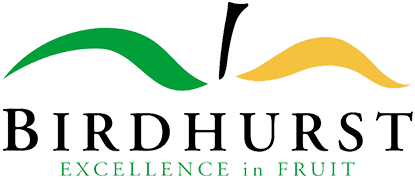
Birdhurst Orchards
Nearby our orchards the golden sun streams onto the tranquil turquoise waters, soft golden sand and lush native rainforests of the Abel Tasman & Kahurangi National parks. But what does that have to do with growing the best apples in the world? The answer is – “Everything”.
Birdhurst Orchards are located at the top of the South Island with our headquarters in sunny Motueka. Our region boasts excellent growing conditions for apples and kiwiwfruit with long summer days and lush fertile plains.
It’s a unique eco-system with a temperate climate.
Our growing season begins in September when the soil wakes from the cool winter and the spring rains provide an average rainfall of 330 mm. The long days of the Tasman summer bring an average of 740 hours of sunshine and, in combination with sea breezes from the Tasman Bays, provide the perfect conditions for our fruit to ripen. While you may not have experienced our region in person – we aim to bring you a slice of pure, New Zealand paradise with every piece of Birdhurst Fruit.
Our Fruit
As 100% pure NZ orchards, we grow a large selection of premium apples and kiwifruit. We are also continuously engaged to grow new varieties of fruit to excite you for the years to come. As growers, everything we do builds towards that moment of truth when you experience the taste of Birdhurst Fruit.











OUR PROCESSES
At Birdhurst Orchards we work all year round to bring you the best possible fruit. Each season brings new challenges and processes that we have developed in our stride towards excellence.
At the end of winter our team prepares for the season ahead by pruning and setting the trees and vines. Growing season begins in September as the sunshine hours and temperatures rise and our trees and vines start to produce the green tissues required to grow and feed the coming fruit.
As spring turns to summer our trees and vines begin to flower and bees are introduced into the orchards to pollinate the apples and kiwifruit. Once pollination has been completed, the next 30 days are critical to the fruit end characteristics. Over the warm summer our orchards are managed using a balanced irrigation plan to ensure our trees and vines receive the hydration they need, while conserving the amount of water we use.
Our picking season degins near the end of summer. It is our most labour intensive time and it’s when we reap the rewards of our constant year round care and attention.






A SUSTAINABLE FUTURE
All of our orchards are GLOBALG.A.P. certified. The GLOBALG.A.P. certification demands greater efficiency in production thus improving business performance, reducing waste of vital resources and requiring a general approach to farming that builds in best practices for generations to come
GLOBALG.A.P. Certification covers:
Some examples of this include:
Water: We use drip technology, low-pressure micro-sprinklers and base our irrigation water use on monitoring and analysis of soil moisture level and weather data to minimse water consumption. In addition, there is no application of agrochemicals within 10 meters of any permanent water body.
Local suppliers: We source locally wherever possible.
Waste: We compost fruit waste, burying it back into the orchards.
Pest management: We conduct field scouting for pests, insect phenology modeling to understand pest management needs and conduct regular Pest monitoring by NZ Apples and Pears & by AgFirst and an internal quality team.
Herbicides & Pesticides: Application using spot-spraying method only, we monitor toxicity of pesticide and herbicide use and set goals to reduce, we use reduced dosage strategies (e.g. spot spraying and alternate row spraying), our application equipment is calibrated regularly, we use precision application method based on multiple samplings per field following the IFP program (improved chemicals).
Soil management: We maintain records to demonstrate changes in soil quality season-by- season and our orchards show evidence of soil quality improvement YOY. Perennial crops are integrated into our orchards and long-term crops are incorporated into crop rotation.
Recycling: We recycle steel and agrochemical containers via agchem recycling.
Future proofing: We are moving towards mechanicalisation e.g. using platforms rather than ladders, and changing our growing systems e.g. shifting to trellis based growing systems to allow for the entry of robotics systems as the technology evolves to future proof our business.

